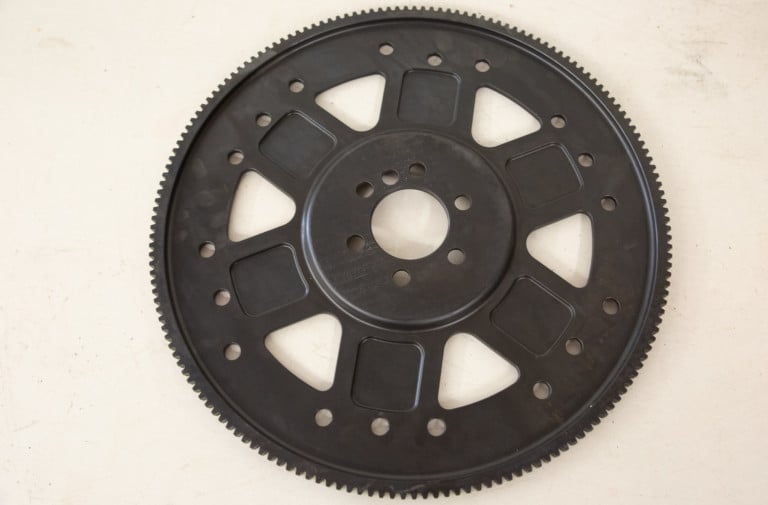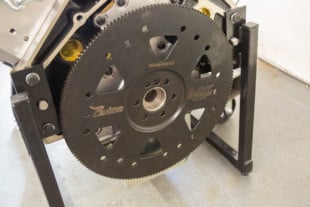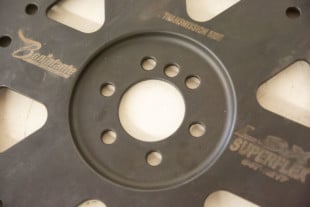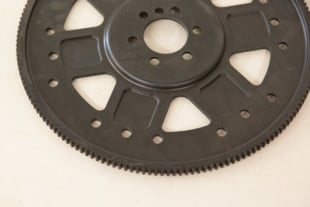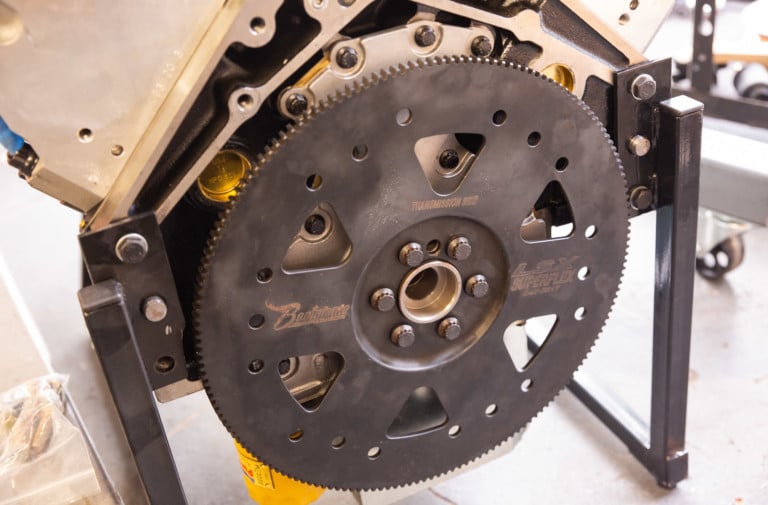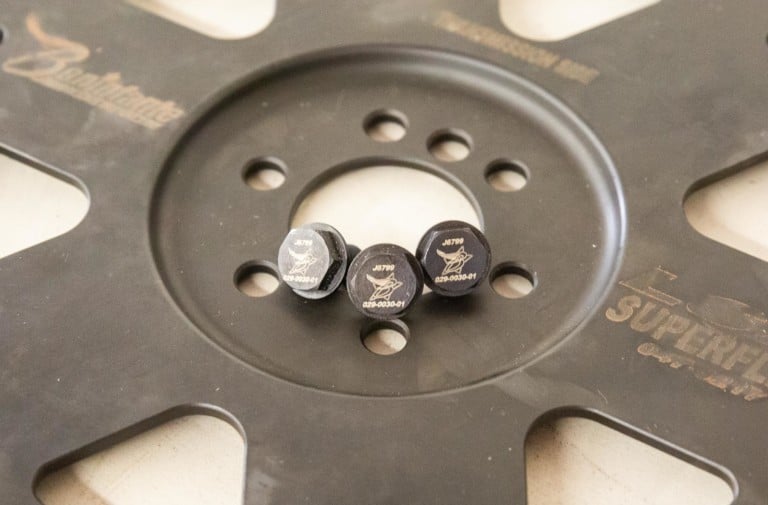There are a lot of ways you can lose a bracket race, and anything you can do to help reduce that number is pretty important. Inconsistency and simple mechanical failures are two of the biggest things that can take you out. You might be surprised how a flexplate can help with both of those issues, and if you’re serious about bracket racing a good flexplate should be on your list of must-have parts. Tom Kundrik at ProTorque helped us settle on a 168-tooth Superflex flexplate from Boninfante that will work with our LS-based engine.
If you think about it, a flexplate is one of the most critical parts of your race car, as it connects the engine to the rest of the driveline. The flexplate is also in charge of making sure your engine turns over when the starter is called upon to get things going. So, if you don’t have a durable flexplate that is designed for your application, you could run into issues that might possibly cost you a race thanks to an engine that won’t start, or fails and brings your car to a stop in a hurry.
A flexplate really doesn't look that important by itself sitting on your workbench, but when you think about what it has to do that mindset gets changed in a hurry.
Project Number Cruncher’s 427 cubic-inch LS engine that was built by the students at SAM Tech made just over 780 horsepower – not bad for a naturally aspirated engine with 13:1 compression. We knew that a good flexplate was important due to the power the engine makes, the fact it’s naturally aspirated, and how often it would be getting started in a bracket racing application.
What To Look For In A Flexplate
The first thing that Kundrik advised us on was how important it is to get a flexplate with the proper SFI rating.
“SFI rating is something you need to look at, to ensure you stay within the horsepower rating since there are 29.1 and 29.2 rated flexplates. The SFI 29.1 flexplate is rated for 1,500 horsepower, and the 29.2 for 3,500 horsepower. Since there are bracket cars out there making some big horsepower, this will actually play a factor in which flexplate you go with. The last thing you want to deal with is a catastrophic flexplate failure sending shrapnel into the driver’s compartment of your vehicle because you didn’t get a strong enough flexplate. Our flexplates are tested to 20,000 rpm…that’s actually greater than the SFI 29.2 standard,” Kundrik says.
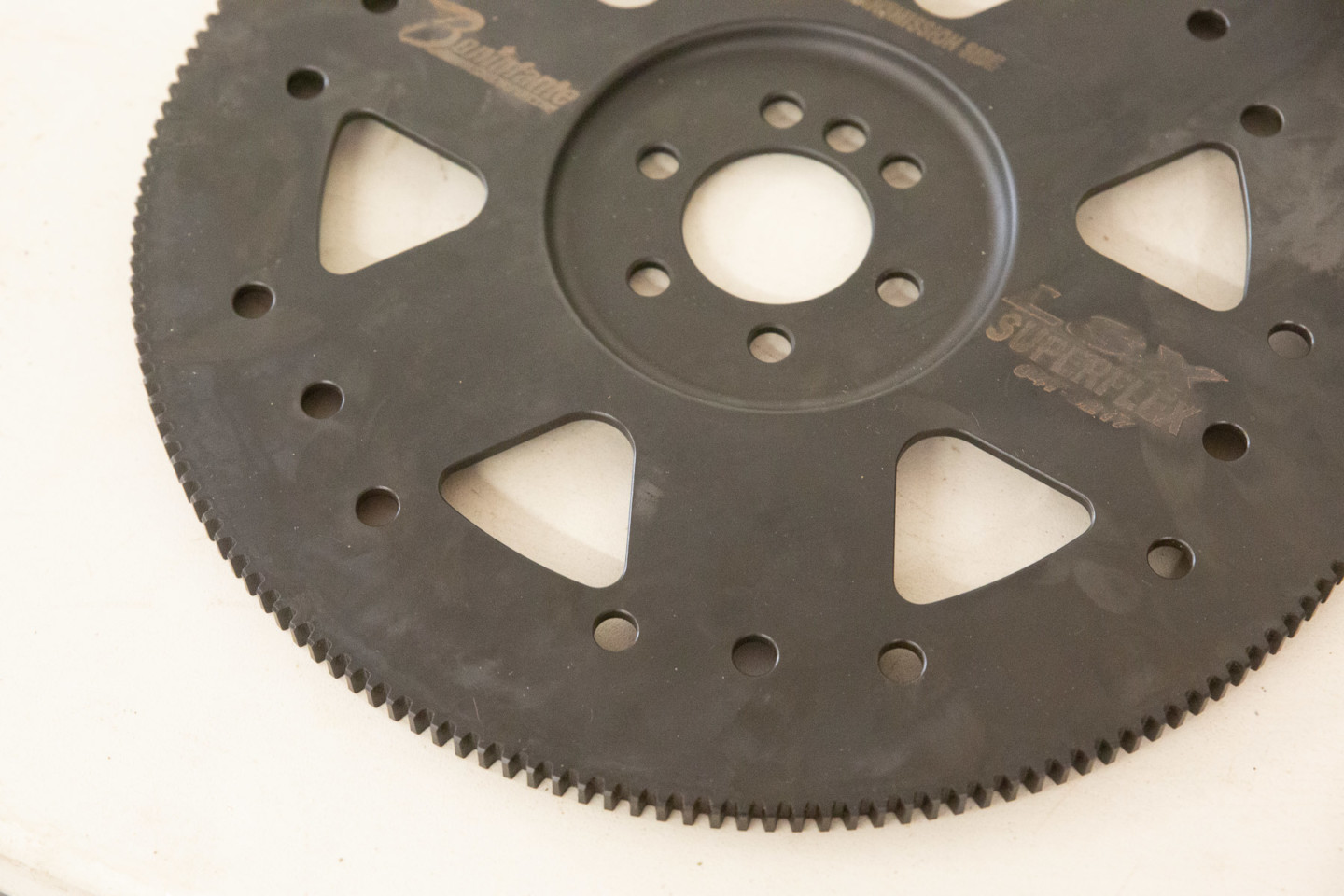
If you plan to make a lot of horsepower, or are running an engine with a ton of compression, you’ll need a strong flexplate. The brutal amount of torque a racing starter throws at a flexplate will put a lot of stress on it, and if you’re not using the right one it will begin to display issues with its teeth, or it will damage your starter – both are easy ways to not make a round of racing.
One of the nice things about our Boninfante flexplate is that it can be SFI recertified one time, we just need to send it back to Boninfante for them to inspect it for any cracks or damage to its teeth. If there are no issues, it will get a fresh SFI sticker and be good to go. While this is a great service to take advantage of, it will also help you maintain your race car better and catch any issues that could cost you a race.
The flexplate weight might play a role in which you decide to use, as this will affect performance. Depending on your engine package and the type of racing you’re doing, a lighter flexplate could be the ticket. A N/A racer whose engine is very load sensitive, and is counting pounds, might choose a lightweight part. If you’re a racer that’s using a power-adder, the strength of the flexplate might be your main concern, and weight is just an afterthought. A bracket racer will need a flexplate that strikes a happy medium between weight and strength based on the type of racing they’re doing.
Boninfante's flexplates aren't the lightest on the market, but they are made of a very strong material. There are lightening pockets machined into the flexplate that help reduce weight without sacrificing strength.
Our Boninfante flexplate is made of aerospace-grade alloy steel that’s been through a special three-stage heating process. Kundrik explains why that extra strength is important to a bracket racer.
“A lot of the bracket racers out there buy our flexplates because of how strong the teeth are. Think about it, some bracket racers are going to start their car 40 times a day at a big bracket race. So, they don’t want to worry about knocking the teeth off. That’s why the one-piece flexplate works so well, it eliminates a possible failure point.”
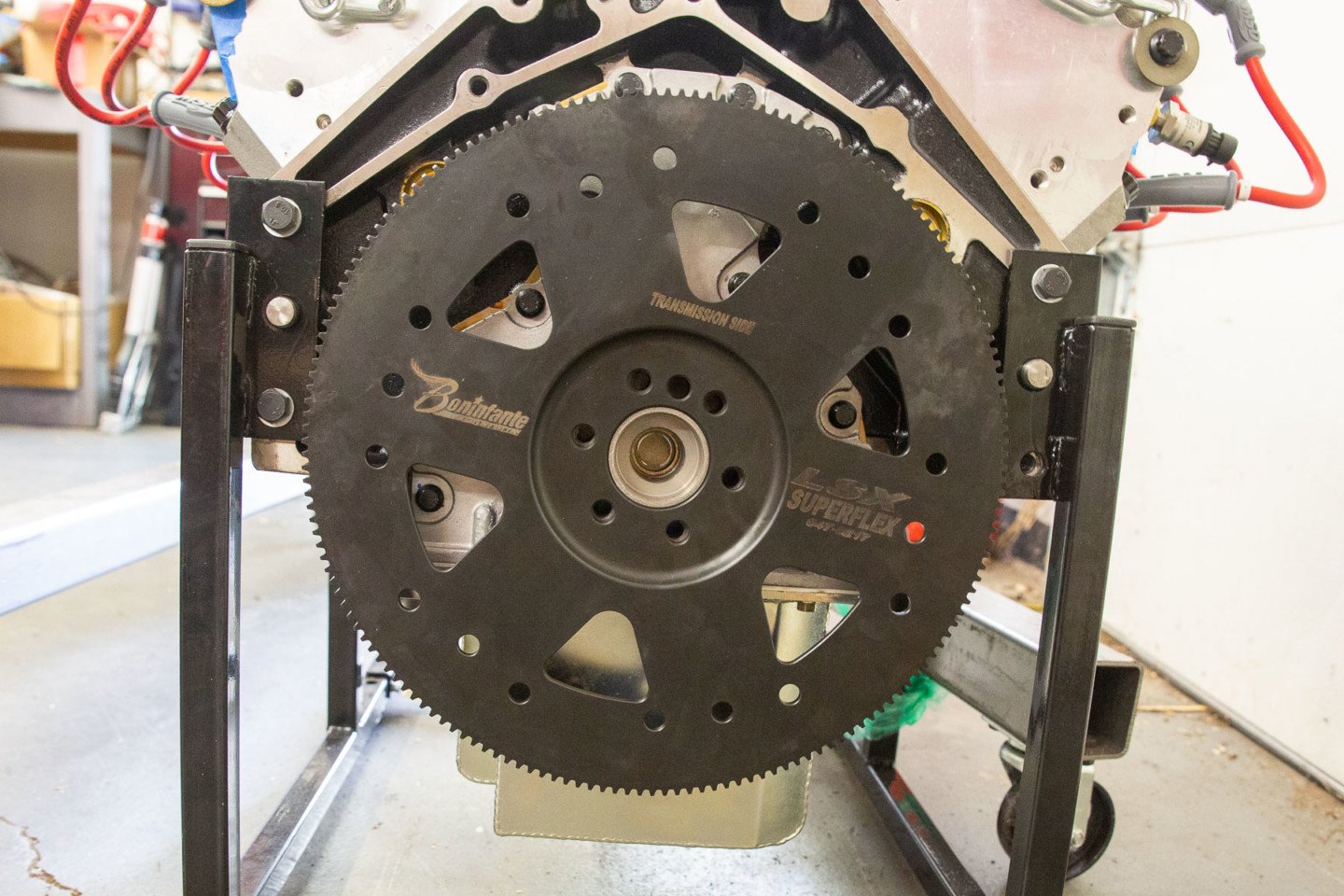
There’s nothing wrong with buying a flexplate that’s “overkill” for your engine. The added durability will provide you with good peace of mind.
How A Flexplate Can Help You
If you think about it, the flexplate is really a marvel of engineering. This thin piece of metal is tasked with transferring power and starting the vehicle.
“The flexplate plays several different roles in a driveline. It prevents the converter from ballooning too much and keeps the converter from pushing the thrust bearings out of the engine. It really is the glue that holds everything together by adding rigidity. The weight and balance it provides also makes sure the engine stays happy when it’s spinning at high RPM levels,” Kundrik says.
With all this talk of flexplates, we’d be remiss if we didn’t touch on what holds them to the crank itself. The last thing you want to do is just use some random fasteners that you find in the coffee can on your workbench that “sort of” fit…that’s a great way to set yourself up for disaster in a hurry.
Using the correct fasteners for your flexplate and torquing them down properly is very important. A small amount of threadlocker will help keep them in place.
“Good hardware is important because it provides the right clamping force to attach the flexplate to the crank. You don’t want to use fasteners that aren’t up to the task, because they will cause wear issues, and cut down on the longevity of the flexplate. Incorrect hardware can also fail, and that will cause major issues. If that bolt fails, it can take a lot of stuff with it. You also want to make sure you’re following the recommended torque sequence and specs for your specific engine application,” Kundrik explains.
Bracket racing requires a vehicle that is both consistent and mechanically sound if you want to win on a regular basis. The smallest detail, like the flexplate, can be the difference between going home early and going to the next round. If you’re a bracket racer in the market for a flexplate make sure you do some research to find the best option for your specific application.




